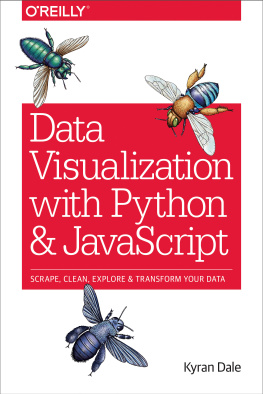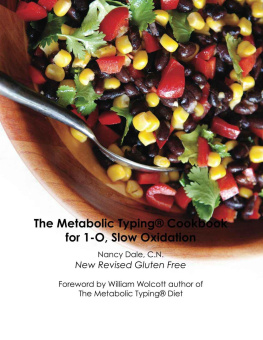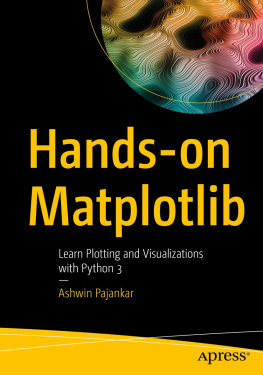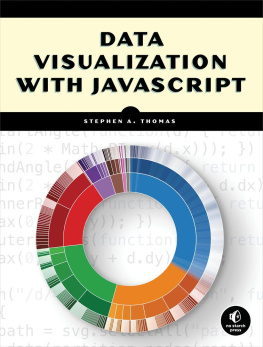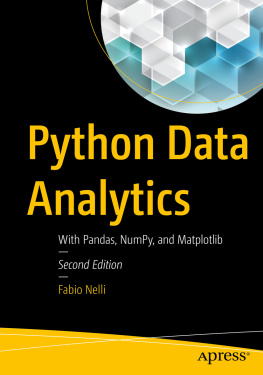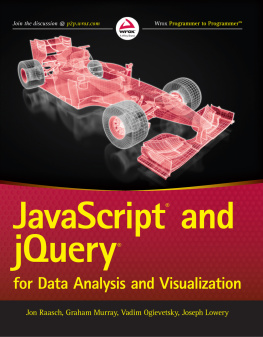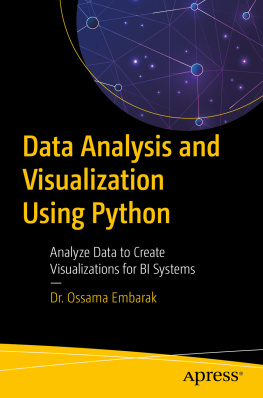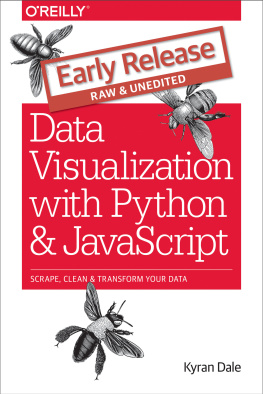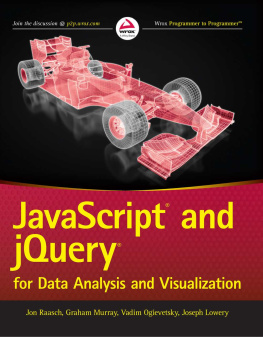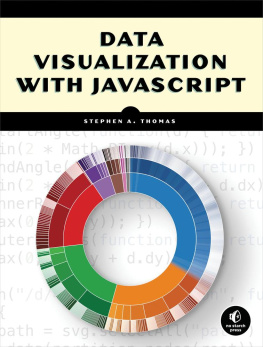Data Visualization with Python and JavaScript
by Kyran Dale
Copyright 2016 Kyran Dale. All rights reserved.
Printed in the United States of America.
Published by OReilly Media, Inc. , 1005 Gravenstein Highway North, Sebastopol, CA 95472.
OReilly books may be purchased for educational, business, or sales promotional use. Online editions are also available for most titles (http://oreilly.com/safari). For more information, contact our corporate/institutional sales department: 800-998-9938 or corporate@oreilly.com .
- Editors: Dawn Schanafelt and
Meghan Blanchette - Production Editor: Kristen Brown
- Copyeditor: Gillian McGarvey
- Proofreader: Rachel Monaghan
- Indexer: Judith McConville
- Interior Designer: David Futato
- Cover Designer: Karen Montgomery
- Illustrator: Rebecca Demarest
Revision History for the First Edition
- 2016-06-29: First Release
- 2017-03-17: Second Release
See http://oreilly.com/catalog/errata.csp?isbn=9781491920510 for release details.
The OReilly logo is a registered trademark of OReilly Media, Inc. Data Visualization with Python and JavaScript, the cover image, and related trade dress are trademarks of OReilly Media, Inc.
While the publisher and the author have used good faith efforts to ensure that the information and instructions contained in this work are accurate, the publisher and the author disclaim all responsibility for errors or omissions, including without limitation responsibility for damages resulting from the use of or reliance on this work. Use of the information and instructions contained in this work is at your own risk. If any code samples or other technology this work contains or describes is subject to open source licenses or the intellectual property rights of others, it is your responsibility to ensure that your use thereof complies with such licenses and/or rights.
978-1-491-92051-0
[LSI]
Preface
The chief ambition of this book is to describe a data visualization (dataviz) toolchain that, in the era of the Internet, is starting to predominate. The guiding principle of this toolchain is that whatever insightful nuggets you have managed to mine from your data deserve a home on the web browser. Being on the Web means you can easily choose to distribute your dataviz to a select few (using authentication or restricting to a local network) or the whole world. This is the big idea of the Internet and one that dataviz is embracing at a rapid pace. And that means that the future of dataviz involves JavaScript, the only first-class language of the web browser. But JavaScript does not yet have the data-processing stack needed to refine raw data, which means data visualization is inevitably a multi-language affair. I hope this book provides ammunition for my belief that Python is the natural complementary language to JavaScripts monopoly of browser visualizations.
Although this book is a big one (that fact is felt most keenly by the author right now), it has had to be very selective, leaving out a lot of very cool Python and JavaScript dataviz tools and focusing on the ones I think provide the best building blocks. The number of cool libraries I couldnt cover reflects the enormous vitality of the Python and JavaScript data science ecosystems. Even while the book was being written, brilliant new Python and JavaScript libraries were being introduced, and the pace continues.
I wanted to give the book some narrative structure by setting a data transformation challenge. All data visualization is essentially transformative, and showing the journey from one reflection of a dataset (HTML tables and lists) to a more modern, engaging, interactive, and, fundamentally, browser-based one seemed a good way to introduce key data visualization tools in a working context. The challenge I set was to transform a basic Wikipedia list of Nobel Prize winners into a modern, interactive, browser-based visualization. Thus the same dataset is presented in a more accessible, engaging form. But while the creation of the Nobel visualization lent the book a backbone, there were calculated redundancies. For example, although the book uses Flask and the MongoDB-based Python-EVE API to deliver the Nobel data to the browser, I also show how to do it with the SQL-based Flask-RESTless. If you work in the field of dataviz, you will need to be able to engage with both SQL and NoSQL databases, and this book aims to be impartial. Not every library demonstrated was used in transforming the Nobel dataset, but all are ones I have found most useful personally and think you will, too.
So the book is a collection of tools forming a chain, with the creation of the Nobel visualization providing a guiding narrative. You should be able to dip into relevant chapters when and if the need arises; the different parts of the book are self-contained so you can quickly review what youve learned when required.
Conventions Used in This Book
The following typographical conventions are used in this book:
ItalicIndicates new terms, URLs, email addresses, filenames, and file extensions.
Constant widthUsed for program listings, as well as within paragraphs to refer to program elements such as variable or function names, databases, datatypes, environment variables, statements, and keywords .
Constant width boldShows commands or other text that should be typed literally by the user.
Constant width italicShows text that should be replaced with user-supplied values or by values determined by context.
Tip
This element signifies a tip or suggestion.
Note
This element signifies a general note.
Warning
This element indicates a warning or caution.
Using Code Examples
Supplemental material (code examples, exercises, etc.) is available for download at https://github.com/Kyrand/dataviz-with-python-and-js.
This book is here to help you get your job done. In general, if example code is offered with this book, you may use it in your programs and documentation. You do not need to contact us for permission unless youre reproducing a significant portion of the code. For example, writing a program that uses several chunks of code from this book does not require permission. Selling or distributing a CD-ROM of examples from OReilly books does require permission. Answering a question by citing this book and quoting example code does not require permission. Incorporating a significant amount of example code from this book into your products documentation does require permission.
We appreciate, but do not require, attribution. An attribution usually includes the title, author, publisher, and ISBN. For example: Data Visualization with Python and JavaScript by Kyran Dale (OReilly). Copyright 2016 Kyran Dale, 978-1-491-92051-0.
.
OReilly Safari
Note
Safari (formerly Safari Books Online) is a membership-based training and reference platform for enterprise, government, educators, and individuals.
Members have access to thousands of books, training videos, Learning Paths, interactive tutorials, and curated playlists from over 250 publishers, including OReilly Media, Harvard Business Review, Prentice Hall Professional, Addison-Wesley Professional, Microsoft Press, Sams, Que, Peachpit Press, Adobe, Focal Press, Cisco Press, John Wiley & Sons, Syngress, Morgan Kaufmann, IBM Redbooks, Packt, Adobe Press, FT Press, Apress, Manning, New Riders, McGraw-Hill, Jones & Bartlett, and Course Technology, among others.

